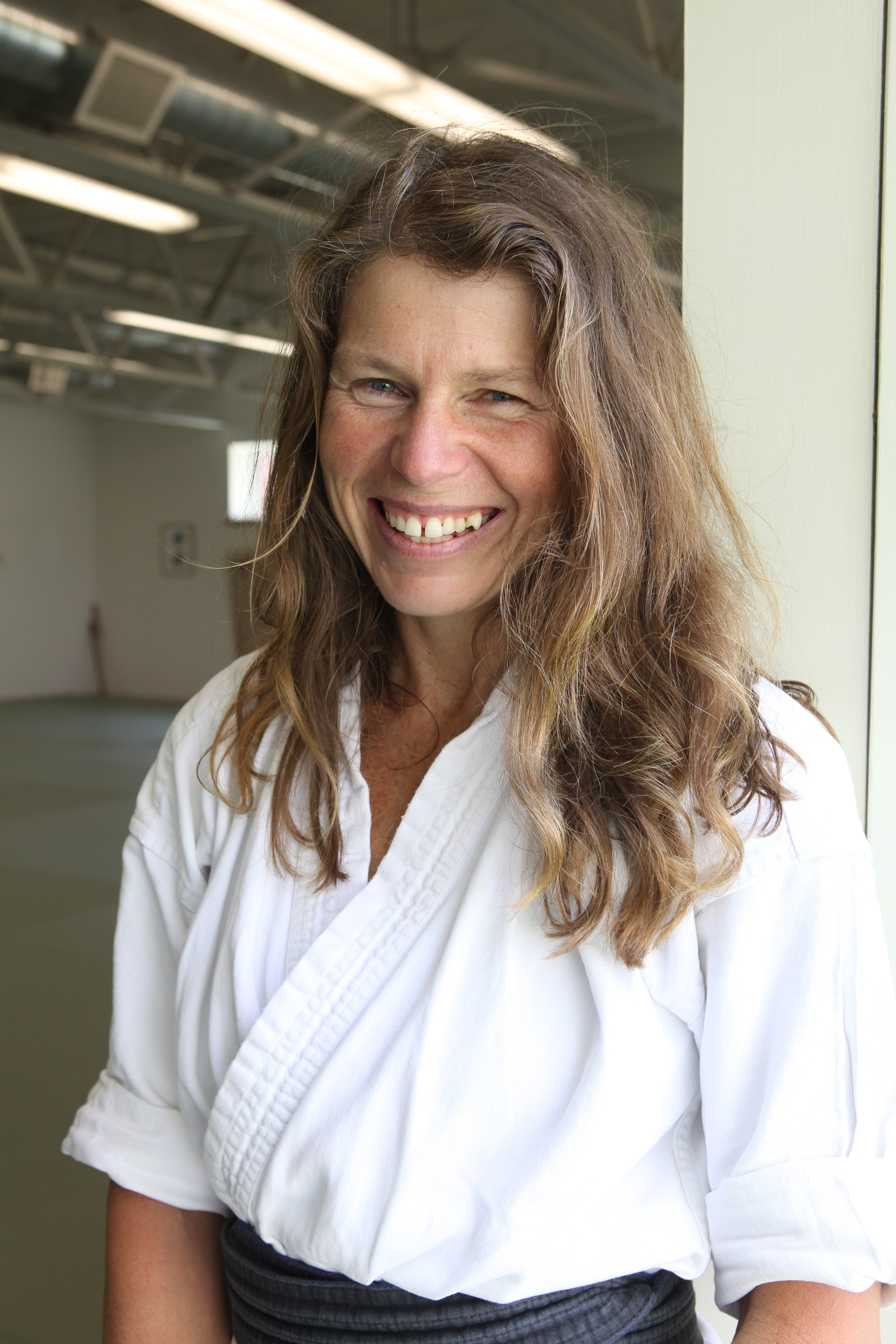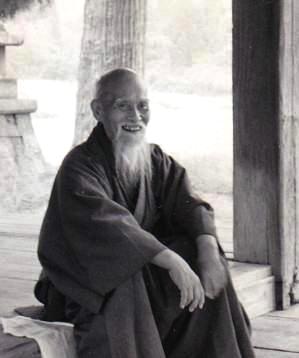
If you’ve been training for a while, you probably have heard at one point or another that you need to relax more. Easier said than done. To relax, you need to not tense up, and not doing something is really difficult. It’s much easier to focus on what to do instead. Since in my work as a psychologist I spend a lot of time helping people deal with stress, and find relaxation, I decided to attempt to apply some of my knowledge to Aikido, and combine it with my own experience of practicing and teaching this art. It is common for people to tense up when told to relax, so this article will focus on ways to find relaxation in our aikido practice.
Tension as manifestation of stress:
First, I believe that when you’re told to relax, it refers to physical muscle tension, as wellas psychological stress, represented in thoughts and feelings. Both affect and augment each other. They are results of lifelong patterns and current stress levels, triggering a fight or flight reaction in response to being attacked or thrown during practice. Our past experiences, and ongoing stress are stored in our body and reflected in our thoughts and feelings. Therefore, I believe, an approach to finding relaxation in Aikido is multifaceted.
Sometimes, in order to find relaxation, in addition to the physical relaxation, we need to address our habitual thoughts and feelings in response to stress, as well as our responses to a “threat” in the moment. It probably helps to understand stress and stress response a bit better, in order to find some ideas for transforming our Aikido practice. Researchers, agree that we experience stress when a situation pushes us beyond what we are used to. It could be an ongoing or situational demand. Hans Selye, who coined the term, defines it as a “body’s response to any demand for change”. Later, the definition was expanded to a psychological realm, describing stress as “internal and external factors making it difficult to adapt to change” or “response to a threat” in general.
When we think of our Aikido practice, I think it is fair to say that we bring into it our body memory of stress, beliefs about dealing with a challenge, and feelings about conflict, attacking, being thrown etc. I believe that they’ll affect our movement, and our reactions to change and threat. I also think that we can work on these in order to increase relaxation in our movement, and ability to be present and adaptable on the mat.
Physical Relaxation:
One approach is physical, through finding ways to relax our muscles (which is usually what we think of, when told to relax, hence the shoulder rolling etc. I even trained with someone who used to hit his shoulders in order to get them to relax). Again, although not impossible, it’s not easy to do. It requires first recognizing the tension and then focusing on muscle relaxation on a daily basis, outside of class and in class while under stress of being attacked or thrown. One of my favorite quotes is from Dan Messisco Sensei: “When you’re told to relax your shoulders, bend your knees”. It speaks to the fact that it is easier to do, rather than not do something, and provides guidance for replacing an undesired behavior with a desired one. It also points to a method of having your upper body sit effortlessly on your hips and legs, as they do the work. Sometimes, a simple physical adjustment can do the trick. Another physical way of pursuing relaxation would be focusing on diaphragmatic breathing, or using imagery to help your body to relax.
Recognizing and transforming one’s thoughts:
Another way to approach relaxation on the mat would be to examine our thoughts on attacking or being attacked. For example: I will respond differently to an attack, ifI think “this person is being difficult on purpose to prevent me from executing technique”, then if I think “they are providing a good, honest challenge”. The same with interpreting being thrown as “he or she is trying to hurt me” or a thought “this a pretty hard fall, let me focus on falling safely”. Which thought would be more helpful in improving my Aikido? It’s pretty obvious it’s the second one in both cases. In other words, I can choose which way of thinking can help me relax and adapt to the situation more effectively. This requires awareness in the moment, and responding, rather than reacting to a “perceived threat”. It could be described as turning a stimulus-reaction situation into stimulus-mindfulness-response one. That kind of attention and ability to pick up on all aspects of the situation, could be described as “martial awareness” in the context of Aikido. I believe that it’s what Saotome Sensei refers to, when he encourages his students to be aware of different possibilities and openings, when dealing with an attack.
Recognizing and transforming one’s feelings:
Another way is to work with the feelings more directly. In my work as a psychologist, Ifind that they are usually the last to change, following behaviors and thoughts. Recognizing that they might stem from our previous experiences, and how we interpret current threat is very helpful. For example, it would be great to know our habitual emotional responses like fear or anger, since they’ll affect the ability to relax on the mat. I personally work on my feelings and thoughts about working with people who are bigger and taller than me, trying to not rush through a technique and tense up, because I perceive someone as bigger threat and fear I could fail. If I know that it’s my habitual emotional response (influenced by my thoughts about the situation), I can both try to transform the thought, and try to do the technique with a different feeling. Since it’s difficult to both feel fear and be assertive at the same time, I can tell myself to feel assertive in this situation, and perform the technique “trying on a different feeling”. Imagery is also a very helpful tool, helping to transform one’s feelings. Images often access what we feel better than thoughts. Following the example of working with someone bigger than myself, I can “mentally shrink” them, or imagine myself as taller etc.
In the beginning, I mentioned the “fight or flight response to stress”. I believe that part of Aikido training, and improving one’s movement and presence through relaxation, involves re-programing of that response. The process involves being aware of one’s body, thoughts and feelings, in order to respond to a threat in a different way. Paul Linden, an Aikido teacher who also works a lot with trauma survivors, talks about recognizing a physical feeling you might have when faced with a threat, and then trying to do the same movement while intentionally “removing” that feeling. Whether or not we’ve had any trauma in our lives, I believe that Aikido provides an excellent opportunity to re-program ourselves on and off the mat, and increase a sense of relaxation and adaptability.
Finding the right level of challenge and intensity:
One definition of stress that I find very helpful in my practice is seeing stress as a balance of demands and resources. We get stressed or tense when the demands on us overwhelm our resources. In order to regain our equilibrium, we need to either decrease the demands or increase the resources, or both. I think this concept could be helpful both to individual Aikido practitioners, as well as teachers. If you consider intensity of training, number or size of the attackers as demands, and knowledge of the technique, stamina, ability to relax etc., as resources, you can try to balance these two. Teachers might want students to feel successful, and not threatened by the demands too much, while building up their resources. I believe that knowing what level of challenge works best for you, can really inform your practice. Buddhist meditation teacher, Pema Chödrön states that change happens as a result of balance between challenge and acceptance. I think that statement applies really well to thinking of our own growth, as well as growth of our students.
Going back to the statement that it’s easier to do than not to do something, and trying to sum up my thoughts, here are some ideas for what to do to increase our relaxation, and help ourselves be more present on the mat:
- Using physical strategies for relaxation, such as softening the knees and having upper body rest on top of one’s hips, diaphramatic breathing, muscle relaxation (through noticing tension relaxing muscles intentionally, or use of imagery such as waterfall coming down one’s shoulders)
- Cognitive-behavioral strategies of identifying thoughts around a perceived threat, and intentionally choosing an interpretation allowing better relaxation. Introducing mindfulness, to interrupt the habitual stimulus reaction, and choosing a different response
- Emotional strategies, addressing feelings directly, learning to recognize one’s feelings in response to threat and regulate them, like trying to execute the technique while transforming the feeling into one more helpful in a achieving a sense of relaxation and using imagery
- Creating a balance of demands and resources, sometimes decreasing demands and continually building up “Aikido resources” of skill and physical ability
Good stress and tension:
In talking about relaxation in Aikido, it’s important to state that we need some degree of alertness and readiness. It is called “u stress”, or stress that helps us stay active. We differ in what is our optimal level of stress and tension. It depends on a sensitivity of our nervous system, a quality we’re born with, and on our past experiences. That level can fluctuate and could be intentionally changed. It’s helpful to be aware our own, and our students optimal level of “tension”. For example, majority of people tense up more in randori, but once in a while you’ll see a person who appears more relaxed under more pressure.
Saotome Sensei often says, when emphasizing the martial aspect of Aikido: “you need tension, and intention” . I understand it as alertness, readiness, attention and adaptability. I also believe that it is directly connected to relaxation. In other words, being able to relax physically and mentally, allows us to stay present and respond to an attack. Aikido provides a great opportunity to practice relaxation and alertness on the mat. It provides a laboratory for transforming our habitual reactions and developing greater relaxation, awareness and adaptability in everyday lives.
Ania Small
Ania Small is a Ph.D. in Counseling Psychology with a private practice in Freeport Maine and teaches Aikido at Aikido of Maine.


As one with bad knees I have replaced “bend your knees” with “soften and open your hips” ( after teaching actual hip joint location which is groin/ball joint) as when one does this everything relaxes vs bending of knees actually stresses them.